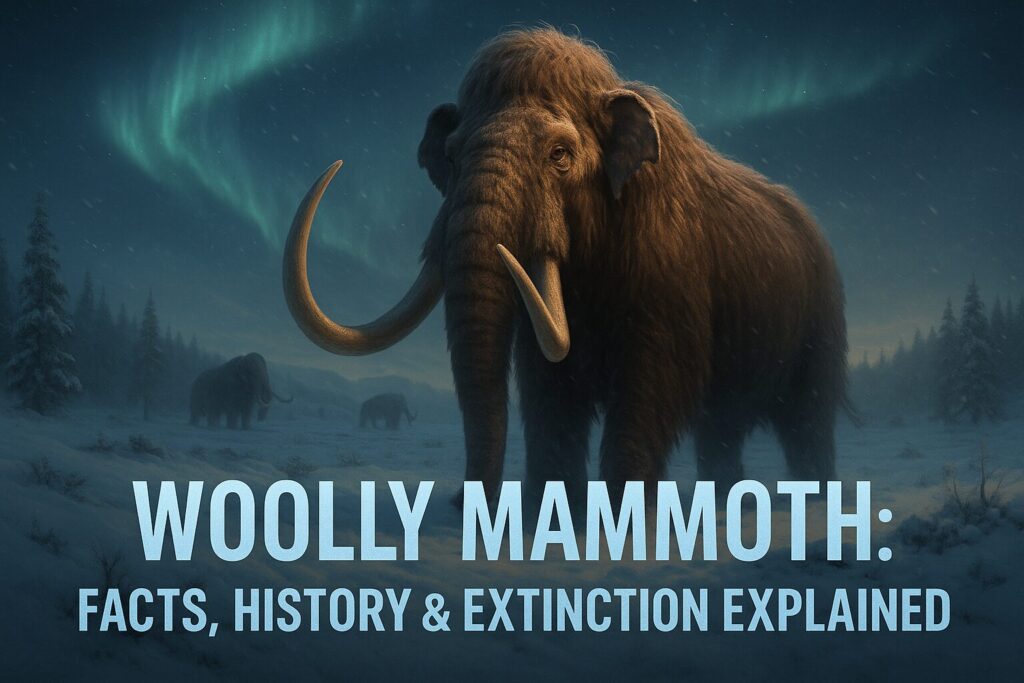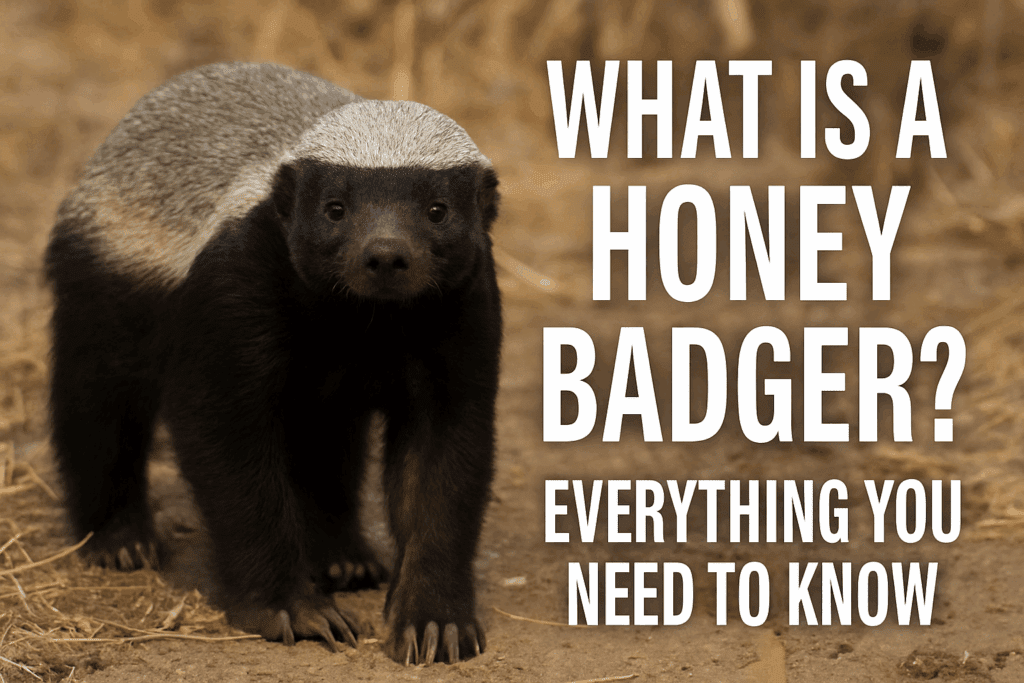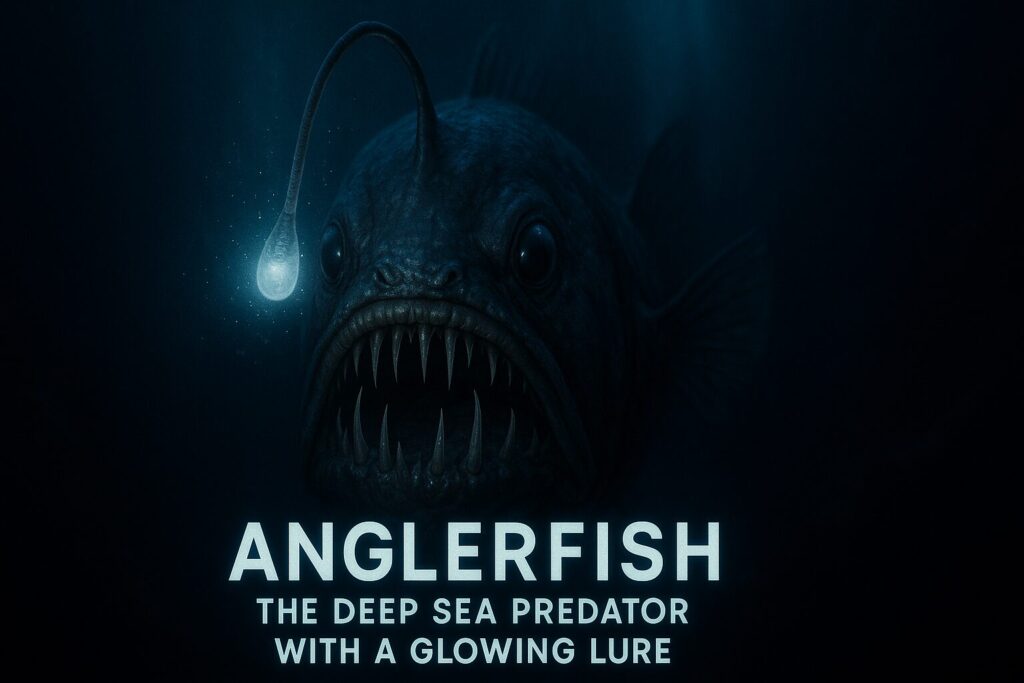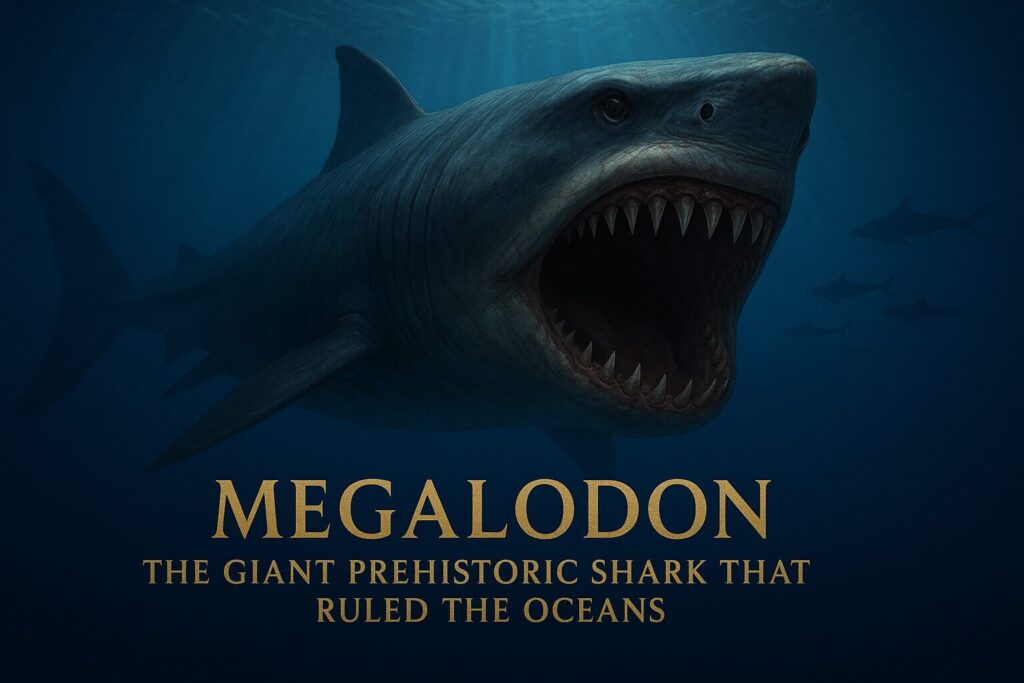Discover the fascinating world of woolly mammoths facts, history, extinction theories, and the science behind bringing them back to life.
Table of Contents
Introduction
The Woolly Mammoth is one of the most iconic Ice Age animals to ever walk the Earth. Towering and shaggy, it has captured human imagination for centuries through ancient cave art, fossil discoveries, and now, scientific debates about its possible resurrection. But beyond the frozen image of a hairy elephant lies a creature that played a major role in prehistoric ecosystems and even in early human survival.
This article delves into the fascinating world of the Woolly Mammoth not just as a relic of the past, but as a scientific window into climate change, evolution, extinction, and de-extinction. From its unique biology to its abrupt disappearance, the Woolly Mammoth is more than just a prehistoric curiosity. It’s a symbol of Earth’s changing history and perhaps, its future.
Let’s explore the untamed legacy of the Woolly Mammoth, and uncover the facts, history, and science behind its rise and fall.
What Is a Woolly Mammoth? Key Facts and Physical Features
The Woolly Mammoth (Mammuthus primigenius) was a massive, cold-adapted mammal that roamed the Earth during the Pleistocene epoch — better known as the Ice Age. It belonged to the elephant family, sharing a common ancestor with today’s African and Asian elephants. But while modern elephants evolved in tropical environments, the Woolly Mammoth was uniquely suited for frigid tundras and glacial plains.
Here are some key facts and distinctive physical features that set the Woolly Mammoth apart:
Key Physical Features
- Thick, shaggy coat: The Woolly Mammoth had two layers of fur a long, coarse outer coat and a dense underlayer of insulating hair helping it survive sub-zero temperatures.
- Curved tusks: Its long, spiraled tusks could grow over 15 feet (4.5 meters) long. These weren’t just for display mammoths used them to defend against predators, dig through snow for food, and even fight rival mammoths.
- Compact ears and tail: Unlike modern elephants, the Woolly Mammoth had small ears and a short tail to minimize heat loss a classic adaptation to Arctic conditions.
- Fat storage: A thick layer of subcutaneous fat (up to 4 inches or 10 cm thick) helped insulate the mammoth’s body and served as energy storage during food-scarce winters.
- Hump of fat on the back: Similar to a camel’s hump, this energy reserve helped it survive harsh seasons when food was scarce.
Size and Weight
- Adult males stood around 9 to 11 feet tall at the shoulder and weighed up to 6 to 8 tons.
- Females were smaller, but still enormous by modern standards.
- Calves were about the size of modern baby elephants but grew rapidly in the first few years of life.
Fun Fact
In 2007, a well-preserved Woolly Mammoth calf named Lyuba was discovered in Siberia, frozen in permafrost for over 40,000 years. Her body was so intact that scientists could study her organs, stomach contents, and even milk residue providing an unprecedented glimpse into mammoth infancy and maternal care.
The Woolly Mammoth wasn’t just a big, hairy elephant. It was a biological masterpiece of Ice Age engineering a creature sculpted by the cold, perfectly tailored for survival in the harshest climates of the ancient world.
The Origins of the Woolly Mammoth: When and Where Did It Live?
The story of the Woolly Mammoth begins over 400,000 years ago in the vast and icy landscapes of prehistoric Eurasia. It evolved from earlier mammoth species like the Steppe Mammoth (Mammuthus trogontherii), which inhabited temperate regions. As Earth’s climate cooled during the Pleistocene epoch, natural selection favored mammoths with thicker coats, smaller ears, and greater cold resistance giving rise to the Woolly Mammoth.
Where Did Woolly Mammoths Live?
Woolly Mammoths roamed a massive range that spanned:
- Northern Eurasia (including Siberia and modern-day Russia)
- Northern North America (Alaska and much of Canada)
- Parts of Europe, especially around the British Isles and Scandinavia
This range made them one of the most widespread large mammals of the Ice Age.
The Mammoth Steppe: A Frozen Paradise
These animals thrived on what scientists call the “Mammoth Steppe” a vast, treeless grassland that stretched from Spain to Canada. Despite the cold, it supported:
- Grasses and sedges rich in nutrients
- Hardy shrubs and mosses
- Dozens of Ice Age herbivores, including bison, horses, reindeer, and woolly rhinoceroses
The Woolly Mammoth was a keystone herbivore, meaning it shaped the ecosystem through its feeding, trampling, and migration patterns. Its presence helped maintain the grassland, preventing tree encroachment and fostering biodiversity.
Timeline of Existence
- Origin: Around 400,000 years ago
- Peak population: 100,000 to 20,000 years ago during glacial maxima
- Gradual decline: 10,000 years ago, as Earth warmed and habitats changed
- Last known population: Survived in isolation on Wrangel Island (off the coast of Siberia) until about 4,000 years ago roughly the time when the Great Pyramids were being built in Egypt!
Remarkable Fact
Woolly Mammoth fossils have been discovered in every continent of the Northern Hemisphere often preserved in permafrost with fur, stomach contents, and even liquid blood intact, as was found in a 2013 Russian excavation. These remains are not only scientific treasures but also key to understanding their lifestyle, diet, and ultimate extinction.
The rise of the Woolly Mammoth was a direct response to the Ice Age. But its ability to dominate such a harsh world also made it vulnerable to the changes that came when the ice began to melt.
Woolly Mammoth vs. Modern Elephants: What’s the Difference?
Though the Woolly Mammoth and modern elephants are close relatives sharing a common ancestor that lived around 6 million years ago they are strikingly different in terms of appearance, adaptations, and behavior. Comparing them side by side reveals how evolution responds to vastly different environments.
Key Differences Between Woolly Mammoths and Modern Elephants
| Feature | Woolly Mammoth | Modern Elephants |
|---|---|---|
| Habitat | Cold, icy tundras and grasslands | Tropical savannas and forests |
| Fur | Thick, double-layered coat with long guard hairs | Sparse hair, mainly for temperature regulation |
| Tusks | Long, curved, often spiraled tusks (up to 15 feet) | Straighter tusks; shorter in African elephants |
| Ears | Small and rounded to minimize heat loss | Large and flat to radiate heat |
| Fat Storage | Thick fat layer and a fatty hump for insulation and energy | Minimal fat stores; rely on external temperature regulation |
| Size | Slightly smaller than African elephants but bulkier and more compact | African elephants are taller; Asian elephants are closer in size to mammoths |
Genetic Similarities and Differences
Modern Asian elephants (Elephas maximus) are the Woolly Mammoth’s closest living relatives genetically closer than African elephants. In fact, studies show that they share over 99.96% of their DNA.
However, key differences lie in just a few dozen genes those that control hair growth, fat metabolism, and cold adaptation. These small variations made a massive difference in surviving an Ice Age climate.
Behavioral Differences
- Migration Patterns: Mammoths migrated seasonally across tundras, likely in search of vegetation buried under snow. Today’s elephants also migrate but in warmer regions.
- Social Structure: Both Woolly Mammoths and modern elephants lived in matriarchal herds led by an older female a behavior that has endured for millions of years.
Interesting Insight
The structure of Woolly Mammoth molars flat with ridged surfaces was ideal for grinding coarse grasses and tough vegetation. In contrast, African elephants eat a broader mix of leaves, fruits, and bark, reflected in slightly different tooth morphology.
Fun Fact
The Woolly Mammoth’s curved tusks could form nearly a full circle in older individuals. Some tusks even show wear marks that suggest they were used for sweeping aside snow to reach buried plants a behavior not seen in today’s elephants.
In essence, the Woolly Mammoth was not just an “elephant in a winter coat.” It was a masterclass in evolutionary design an Ice Age specialist whose features reflect the demands of a frozen world, in stark contrast to its modern tropical cousins.
Woolly Mammoths and Early Humans: A Prehistoric Connection
The relationship between Woolly Mammoths and early humans was both practical and profound. Far from being distant observers, humans lived alongside mammoths for thousands of years hunting them, honoring them in art, and even using their bones to build shelter. This deep connection left behind a rich archaeological record and evidence of an intertwined existence.
Mammoth as a Vital Resource
To Ice Age humans, the Woolly Mammoth was a walking treasure chest of survival essentials:
- Meat: A single mammoth could feed an entire tribe for weeks or months.
- Hides: Thick skins were used for clothing, blankets, and tent coverings.
- Bones and Tusks: These became tools, weapons, sled runners, even frameworks for dwellings.
- Fat and Marrow: Burned as fuel or consumed for energy during long winters.
This resourceful use of mammoths reflects the ingenuity and adaptability of early humans. It also suggests that mammoths may have been hunted strategically and sustainably for generations until changing climates and pressures tipped the balance.
Evidence from Prehistoric Art
The Woolly Mammoth was a muse for Ice Age artists:
- In France’s Chauvet Cave and Russia’s Kapova Cave, ancient cave paintings depict mammoths in stunning detail, dating back over 30,000 years.
- Carvings and figurines made from mammoth ivory have been found across Europe and Siberia including the famous “Lion Man” of Hohlenstein-Stadel, one of the oldest known sculptures in the world.
These artistic representations weren’t just decorative; they reflect spiritual reverence or cultural symbolism, possibly honoring the mammoth’s power or role in myths.
Mammoth Bone Dwellings
In Ukraine and Russia, archaeologists have uncovered mammoth-bone houses circular structures built from stacked skulls, femurs, ribs, and tusks. Some date back over 20,000 years.
These dwellings:
- Provided sturdy insulation against frigid winds
- May have been covered with hides and turf
- Were likely used as semi-permanent winter homes
Hunting Tactics and Tools
Early humans used flint-tipped spears, coordinated group tactics, and even terrain traps to hunt these giants. Some kill sites, such as those near modern-day Poland and the Czech Republic, reveal clear patterns of organized mammoth hunts.
Fascinating Insight
Genetic studies show that Woolly Mammoths and humans likely coexisted for thousands of years from about 300,000 years ago until the mammoths’ final extinction. This makes them one of the longest-running large prey species in human history.
In many ways, the Woolly Mammoth helped humans survive the Ice Age. But as we’ll see next, the human-mammoth relationship may also have played a role in the species’ tragic end.
Why Did the Woolly Mammoth Go Extinct? Theories and Evidence
The extinction of the Woolly Mammoth remains one of the most studied and debated mysteries in science. Once numbering in the millions across Eurasia and North America, they vanished from the mainland around 10,000 years ago, with isolated populations surviving until about 4,000 years ago. What caused this dramatic decline?
Scientists agree that multiple overlapping factors likely contributed to the Woolly Mammoth extinction a classic case of environmental stress meeting external pressures.
1. Climate Change and Habitat Loss
As the last Ice Age ended around 11,700 years ago, global temperatures rose dramatically.
- Grasslands turned to forests or swamps, reducing the mammoth’s food supply.
- Melting glaciers transformed open plains into fragmented landscapes.
- Cold-adapted species, like the Woolly Mammoth, found their environments shrinking rapidly.
Paleoecological studies show a steep decline in the mammoth’s preferred vegetation tough grasses and sedges replaced by woody plants less suitable for their diet.
2. Human Hunting
The spread of early human populations coincides closely with mammoth decline:
- Evidence of mammoth kill sites, hunting tools, and mammoth-bone shelters points to intensive hunting, especially in Europe and Siberia.
- Some researchers propose the “Overkill Hypothesis”, suggesting that human predation was the tipping point for an already declining population.
- However, this theory remains debated humans likely contributed to extinction indirectly rather than being the sole cause.
Still, it’s hard to ignore the timing: in nearly every region, mammoth extinction occurred shortly after humans arrived or increased their activity.
3. Genetic Decline and Inbreeding
Small, isolated populations like those on Wrangel Island and St. Paul Island show signs of severe inbreeding and genetic bottlenecks.
A 2017 study of Wrangel Island mammoth DNA found:
- Harmful mutations in genes responsible for smell, reproduction, and immune response
- “Genetic meltdown”, where accumulating mutations degraded the mammoth’s fitness
This suggests that even where habitats remained, mammoths may have been too genetically weak to survive long-term.
4. Diseases and Other Stressors
Although less certain, it’s possible that new pathogens introduced by humans or changing ecosystems affected mammoth health. As warming climates brought new species north, so too came diseases that mammoths may not have been immune to.
Summary of Leading Causes
- ✅ Climate warming → habitat and food loss
- ✅ Human hunting → increased pressure
- ✅ Genetic deterioration → population collapse
- ❓ Possible disease or ecosystem shifts
No single factor tells the full story. Instead, the extinction of the Woolly Mammoth appears to be a “death by a thousand cuts” a tragic convergence of rapid climate change, human expansion, and biological vulnerability.
Can Woolly Mammoths Be Brought Back? The Science of De-Extinction
The idea of resurrecting the Woolly Mammoth is no longer just science fiction, it’s a real and active area of research called de-extinction. Thanks to well-preserved mammoth DNA and rapid advances in genetic engineering, scientists are exploring how we might one day walk beside a modern version of this Ice Age giant.
But can we truly bring back the Woolly Mammoth? Or will it be something… close?
The Scientific Approach: How De-Extinction Could Work
Researchers aren’t trying to clone a Woolly Mammoth from frozen remains the DNA is too damaged and incomplete for that. Instead, they’re using gene editing techniques to create a hybrid animal with mammoth-like traits.
Here’s the leading approach:
- Extract Mammoth DNA: From frozen mammoth remains preserved in Siberian permafrost.
- Compare with Asian Elephant DNA: Since the Asian elephant is the closest living relative, scientists identify key mammoth genes responsible for:
- Thick fur
- Fat insulation
- Cold resistance
- Small ears
- Gene Editing with CRISPR: Use CRISPR-Cas9 to splice mammoth genes into the genome of an Asian elephant.
- Embryo Development: Implant the edited embryo into a surrogate elephant or grow it in an artificial womb (a future goal).
This process would produce an “elephant-mammoth hybrid” – not a true mammoth, but an engineered species with many of its features.
Who Is Leading the Effort?
One of the most well-known projects is led by Harvard geneticist George Church and the startup Colossal Biosciences. Their goal is to create mammoth-like elephants that could:
- Repopulate the Arctic tundra
- Help restore ecosystems (by trampling snow and encouraging grass growth)
- Combat climate change by reducing methane-releasing thaw
According to Colossal, a mammoth prototype could be born as early as the late 2020s.
Ethical and Ecological Questions
The excitement around de-extinction is tempered by serious concerns:
- Animal welfare: Is it ethical to experiment on elephants, a species already endangered?
- Habitat suitability: Can mammoths really thrive in today’s Arctic, which is warmer and fragmented?
- Ecological risks: What if reintroducing mammoth hybrids causes unforeseen disruptions?
Many scientists argue that conservation of existing species should be prioritized over recreating extinct ones. Others believe that reviving extinct animals could aid ecosystem restoration and give humans a second chance to protect what was lost.
Fascinating Insight
In 2021, scientists successfully inserted 60+ mammoth genes into elephant cells in the lab. These include genes for cold-resistant blood, fatty tissue, and hair growth proving that mammoth traits can be revived at the cellular level.
So, can we bring back the Woolly Mammoth?
Technically no. Not exactly. But a cold-resistant, fur-covered elephant-mammoth hybrid may soon walk the Earth. Whether this should be done, however, is a question as big as the creature itself.
Conclusion of Woolly Mammoth
The Woolly Mammoth is more than just a fascinating fossil it’s a powerful symbol of Earth’s ancient past and the forces that continue to shape our planet today. From its Ice Age dominance to its mysterious extinction, this mighty mammal offers us lessons about climate, adaptation, biodiversity, and the complex relationship between humans and nature.
We’ve seen how:
- The Woolly Mammoth evolved into a cold-weather specialist, thriving in one of the harshest climates ever known.
- Early humans not only hunted but also revered mammoths, relying on them for survival.
- A combination of climate change, human impact, and genetic decline led to their disappearance a sobering reminder of how fragile even the mightiest species can be.
- And now, science stands at the edge of possibility: bringing mammoth-like creatures back through de-extinction, raising both excitement and ethical challenges.
In many ways, the story of the Woolly Mammoth isn’t just about the past it’s about the future. As we face accelerating climate change, biodiversity loss, and ecological uncertainty, the mammoth’s history urges us to reflect on our impact and responsibility.
Whether or not we ever see a Woolly Mammoth roam again, one thing is clear: its legacy continues to shape science, culture, and imagination in profound ways.





